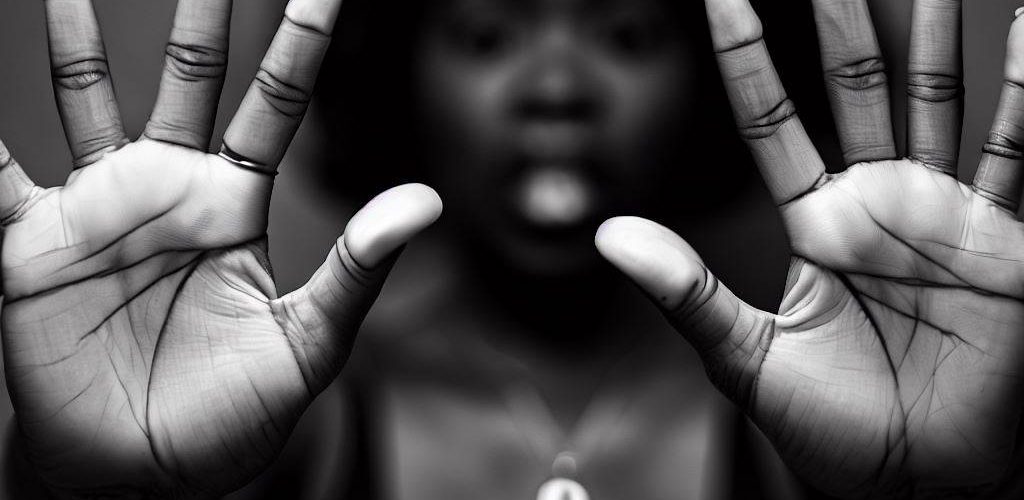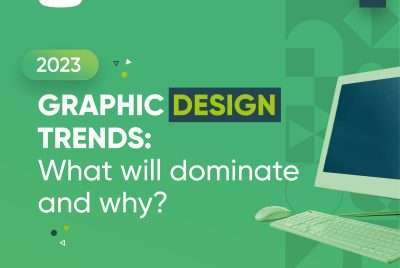In 2018 ethical violation in graphic design was flouted by popular clothing brand H&M. The clothing Brand dressed a black child with a description saying coolest monkey. Whether art directors missed the racial undertones or simply ignored them but the the world didn’t respond well to this oversight and the brand suffered disrepute and was associated with racism because of this ethical violation.
Graphic design is a powerful tool; it shapes the visual identity and communication of businesses and organizations. However, in the pursuit of creating compelling visuals designers like those under H&M’s employ often cross ethical lines knowingly or sometimes in complete ignorance.
These ethical guidelines however account for professionalism and ensure integrity in your work. Failure to stay aware of these guidelines, eventually dent your client’s public image and could lead to dwindling sales for them and loss of clients for you!
To remain credible it’s crucial to adhere to ethical guidelines in graphic design. Here are Ethical violations in Graphic design and how to avoid them so you stay credible and trustworthy.
10 Ethical Violations in Graphic Design
- Plagiarism
- Unauthorized Use of Stock Images
- Misrepresentation
- Offensive or Discriminatory Imagery
- .Uncredited Collaborations
- Misleading Pricing or Offers
- Placing Personal Gain Above Client’s Interest
- Lack of Accessibility
- Environmental Impact
- Failure to Continuously Learn and Adapt
1. Plagiarism
Plagiarism is a grave ethical violation that occurs when designers copy someone else’s work, whether it’s a logo, illustration, or layout, without permission or proper attribution. To avoid plagiarism, prioritize originality and strive to create unique designs that reflect the vision and values of your clients. Conduct thorough research to ensure your designs are distinct and always give credit where it’s due.
Tools: Use plagiarism detection tools such as Grammarly, Copyscape, or Turnitin to check if your designs resemble existing works.
2. Unauthorized Use of Stock Images
Using stock images without proper authorization is an ethical violation that can lead to copyright infringement and legal consequences. Respect the licenses of stock image platforms and ensure you have the appropriate permissions for each image you use. Familiarize yourself with the terms and conditions of stock image providers to avoid any unauthorized use.
Tools: Designers can utilize reputable stock images platforms like Shutterstock, Adobe Stock, or Getty Images, which provide proper licenses for their images.
3. Misrepresentation: Truth in Design
Misrepresentation occurs when a design intentionally deceives or misleads its audience. Uphold honesty and transparency in your work by accurately representing the product, service, or idea you are promoting. Avoid using false claims, manipulated imagery, or misleading information that may undermine the trust of your audience.
Tools: Reputable Graphic designers employ tools use tools like Photoshop or Adobe Illustrator to accurately represent products or services without manipulating imagery or misleading information.
4. Offensive or Discriminatory Imagery:
Avoid using offensive or discriminatory imagery that perpetuates stereotypes, marginalizes certain groups, or promotes hate speech. Embrace diversity and inclusivity in your designs by representing a broad range of cultures, genders, abilities, and backgrounds. By fostering an inclusive visual language, you contribute to a more accepting and respectful society.
Tools: Refer to inclusive design resources such as The Noun Project, Icons8, or Diversity Avatars to find diverse and inclusive imagery that represents a broad range of cultures, genders, and abilities.
5. Uncredited Collaborations:
Design Projects involve the genius of fellow creatives. It’s important to acknowledge the contributions of these fellow designers, illustrators, or photographers who have contributed to your work. Failing to credit them is an ethical violation that undermines professional integrity. Properly crediting collaborators not only shows respect but also fosters a culture of appreciation within the design community.
Tools: Using tools like Asana, Trello, or Basecamp can help designers keep track of contributions and ensure proper crediting of fellow designers, illustrators, or photographers.
6. Misleading Pricing or Offers:
When communicating pricing, discounts, or special offers in advertising and promotional materials, exercise honesty and transparency. Misleading or false information can damage consumer trust and harm your professional reputation. Ensure that your pricing and offers are accurate, clearly presented, and comply with relevant advertising regulations.
Tools:Designers can use design software like Adobe InDesign or Canva to create visually clear and accurate pricing or offer graphics that leave no room for misinterpretation.
7. Placing Personal Gain Above Client’s Interest:
Maintain professionalism by prioritizing the needs and objectives of your clients over personal gain. Placing financial incentives or personal preferences above client interests is an ethical violation that compromises the integrity of your work. Effective communication, active listening, and understanding of client requirements are essential for delivering designs that align with their vision and business goals.
Tools: Effective communication and client management tools like Slack, Monday.com, or Harvest can help designers prioritize client needs and maintain professionalism throughout the design process.
8. Lack of Accessibility:
Design with accessibility in mind to ensure your creations can be enjoyed by everyone. Consider factors such as color contrast, font size, alternative text for images, and keyboard navigation. By creating inclusive designs, you enhance usability and provide equal opportunities for all users.
Tools: Accessibility evaluation tools like WebAIM’s WAVE tool, Color Contrast Analyzers, and screen reader simulators can assist designers in assessing and improving the accessibility of their designs.
9. Environmental Impact:
Consider the environmental impact of your design choices. Use sustainable materials, minimize waste, and promote eco-friendly practices whenever possible. By adopting sustainable design principles, you contribute to a more environmentally conscious industry.
Tools: Designers can utilize eco-friendly resources and sustainable design platforms like Ecofont, Green Printer, or Sustainable Packaging Coalition to minimize their designs’ environmental impact.
10. Failure to Continuously Learn and Adapt
Graphic design is an ever-evolving field, and it is essential to stay updated with the latest trends, techniques, and ethical standards. Failing to continuously learn and adapt can result in stagnant designs that do not meet the evolving needs of clients and audiences. Embrace growth by investing time in professional development, attending design conferences, participating in workshops, and staying connected with the design community. This commitment to ongoing learning will enable you to produce designs that are not only aesthetically pleasing but also ethical and impactful.
Tools: Online learning platforms such as the NGD blog, Udemy, Coursera, or Skillshare offer a wide range of design courses and workshops to help designers stay updated with the latest trends and techniques.
11. Inadequate Client Communication
Inadequate client communication refers to a violation that occurs when a designer fails to effectively communicate with their clients throughout the design process. This can include not seeking clarification on project requirements, disregarding client feedback and input, or neglecting to update clients on the progress of the project. Insufficient communication can lead to misunderstandings, unsatisfactory outcomes, and a breakdown in the designer-client relationship. To avoid this violation, designers should prioritize active and open communication, actively listen to client needs and expectations, seek clarification when necessary, and provide regular updates on the project’s progress.
Tools:Platforms like Asana, Trello, or Basecamp provide a centralized space for client communication, task management, and progress tracking. They allow designers to collaborate with clients, share updates, and keep everyone involved on the same page.
12. Breach of Confidentiality
Breaching confidentiality is an ethical violation that occurs when a designer shares sensitive client information or design concepts without proper authorization. Designers often have access to confidential information such as client strategies, proprietary materials, or unreleased designs. Breaching confidentiality not only undermines the trust between the designer and client but can also result in legal consequences. To avoid this violation, designers should establish clear confidentiality agreements with clients, handle client information with utmost care and security, and seek permission before sharing any confidential information or design work with third parties. Respecting client confidentiality is essential for maintaining professional integrity and protecting the intellectual property of clients.
Tools: Secure File Sharing Services like Dropbox, Google Drive, or Microsoft OneDrive offer secure cloud storage and file sharing options while Password and encryption tools like LastPass, 1Password, Dashlane VeraCrypt and AxCrypt help designers securely store passwords and encrypt sensitive design files.
Respect the guidelines and stay credible
Ethical violations in graphic design are flouted regularly by established brands; In 2018, the fashion brand Moschino faced accusations of plagiarism for allegedly copying a graffiti artist’s work without permission, Kendall Jenner’s clothing brand Revolve 2018 used a stock image from Shutterstock without proper authorization and popular car brand Volkswagen manipulated emissions tests to make their diesel vehicles appear more environmentally friendly.
The point is: anyone can easily violate a graphic design ethic! You too can easily break them if you don’t make the effort to know them and keep them.
To ensure your designs are ethical and stand out in a competitive landscape, remember to prioritize originality, respect copyright laws, uphold honesty and transparency, cultivate inclusivity, acknowledge collaborators, practice transparent pricing, maintain professionalism, design for accessibility, consider environmental impact, and embrace continuous growth.




Beautiful and informative tip.
I’ve learnt a new thing, I’ll keep these in mind and work towards knowing them well